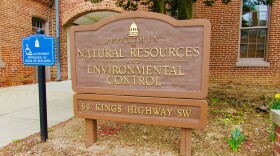The Delaware Open Space Program is looking to increase its funding as the cost of land skyrockets and threats of sea level rise heightens.
Delaware’s Open Space Program was formally established in 1990, and the program has received $10 million annually for decades to acquire new and preserve existing natural land.
With land acquisition prices on the rise and no adjustment for inflation in the program’s funding, Delaware Center for the Inland Bays Director of Conservation and Watershed Planning Michelle Koenig is pitching a change.
The program’s current set $10 million in funding comes from the state’s realty transfer tax.
But Koenig is gauging the possibility of allocating 10% of the total realty transfer tax income to the program with 60% for the Delaware Department of Natural Resources and Environmental Control (DNREC) and 20% for local governments and non-government organizations (NGOs).
“Advocating for an increase to the program through the Bond Bill every year, which is what we started out doing, it's just not sustainable. It's not sustainable for our efforts, it's not really sustainable for the state. Doing an increase in funding this way would— it just gives an ability to plan out better," she told members of the Open Space Council.
For fiscal year 24, the realty transfer tax brought in almost $200 million in revenue for the state.
Koenig explains under her proposed formula, this would have allocated close to $12 million to DNREC for the program and $4 million to local governments and NGOs.
The DNREC Outdoor Recreation, Parks and Trails (ORPT) program is a matching grant program that assists with public park land acquisition and outdoor recreation facility development, and Koenig believes creating this new split would provide more funding for local programs like these.
"[ORPT] is not funded very well — what we've heard is it gets about a million dollars, and so that can't go too far, so land acquisition is not something that's really utilized with that program," she said. "So our thought is if we could boost that — give that program a little bit more funding — maybe that's a better opportunity for local government and nonprofits to get those funds to use for land acquisition."
She's also proposing a $10 million floor to ensure the program never receives funding below this set amount.
This change would require legislative action, but Open Space Council Chair John Schroeder says the program is due for a funding increase.
"$10 million was the appropriated amount 25 years ago, and that's probably somewhere north of $30 to 40 million in today's dollars. We're well behind the ball on funding, but we have to deal with what we have," Schroeder said.
The Nature Conservancy also presented its completed Delaware Conservation Blueprint, identifying conservation opportunity areas to protect critical wildlife habitats at risk from sea level rise, at Wednesday's meeting.
Delaware is the lowest lying state in the country and by 2050, 46% of protected lands are projected to be impacted by sea level rise.
On behalf of the Delaware Land Protection Coalition, the Nature Conservancy developed a statewide conservation blueprint that provides a framework to guide the conservation of key habitats.
William Helt, the Conservancy’s Director of Oceans and Coasts for Delaware, says they used sea level rise projections and the Northeast Habitat Guide to determine the areas most at risk.
“We put that all together to create these conservation areas and really areas for us to start to investigate and think about as a group that we might agree upon whether we should work together to conserve these lands," he said.
Helt says the map is really a way to get the conversation started, but it’s up to the land use practitioners to begin meeting and making preservation decisions.




